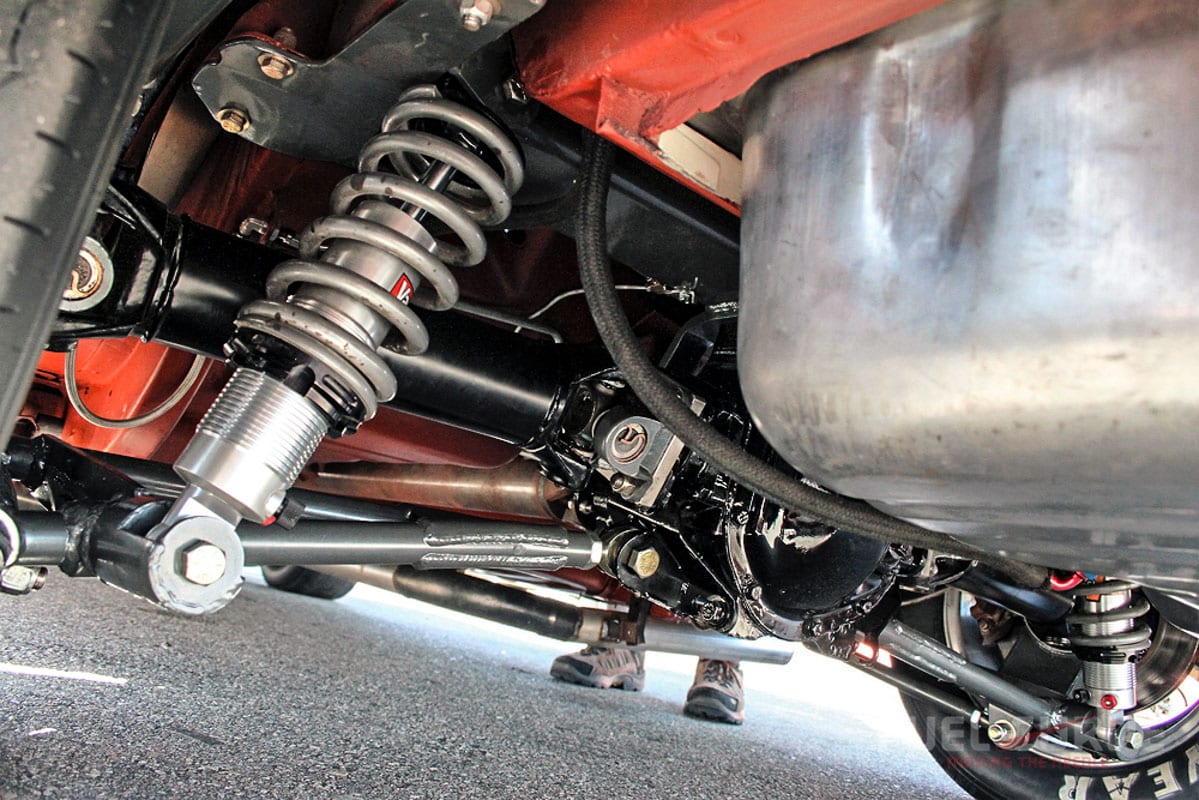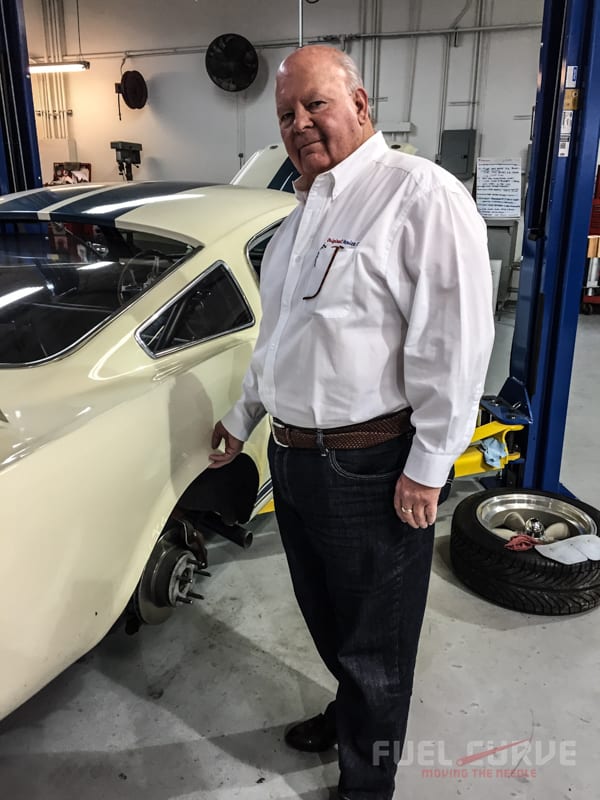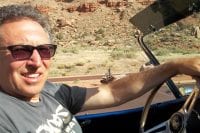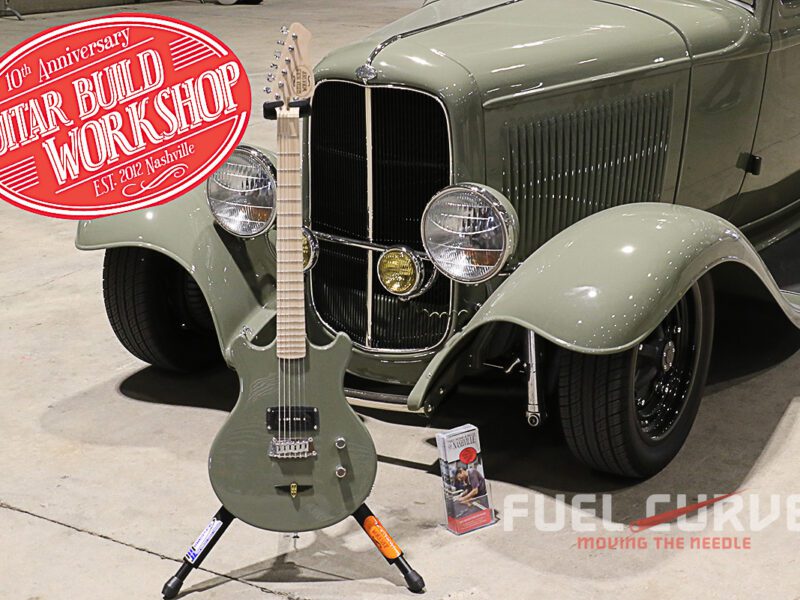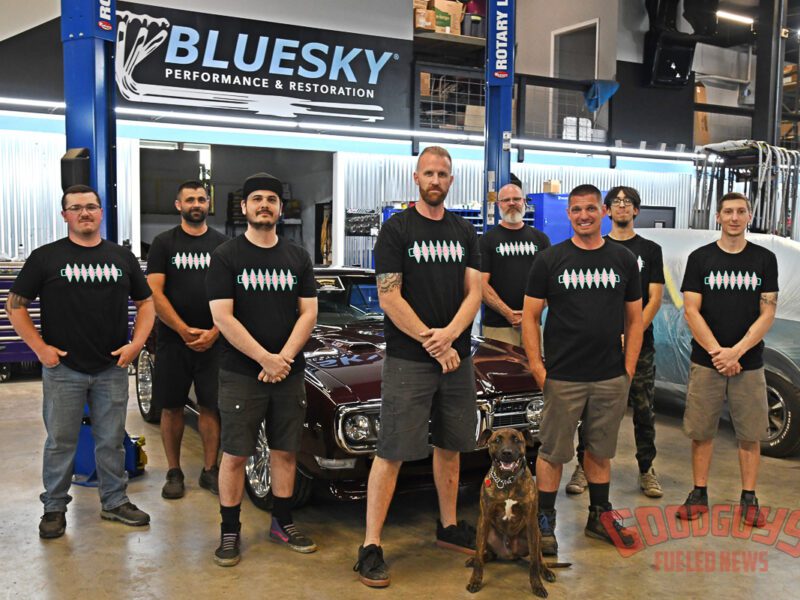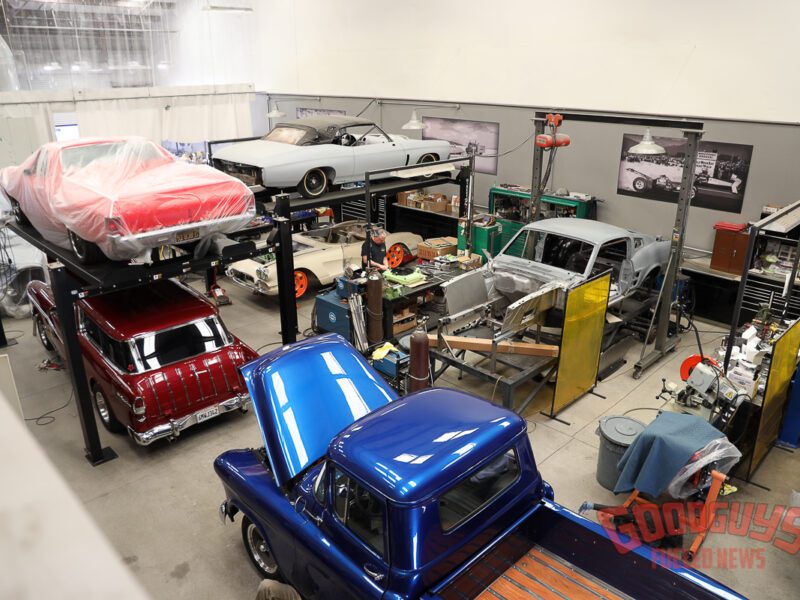OVC Mustangs – New-Old Stock
What does OVC Mustangs stand for? Original Venice Crew. They are directly tied to one of history’s most iconic hot rodders – Carroll Shelby himself.
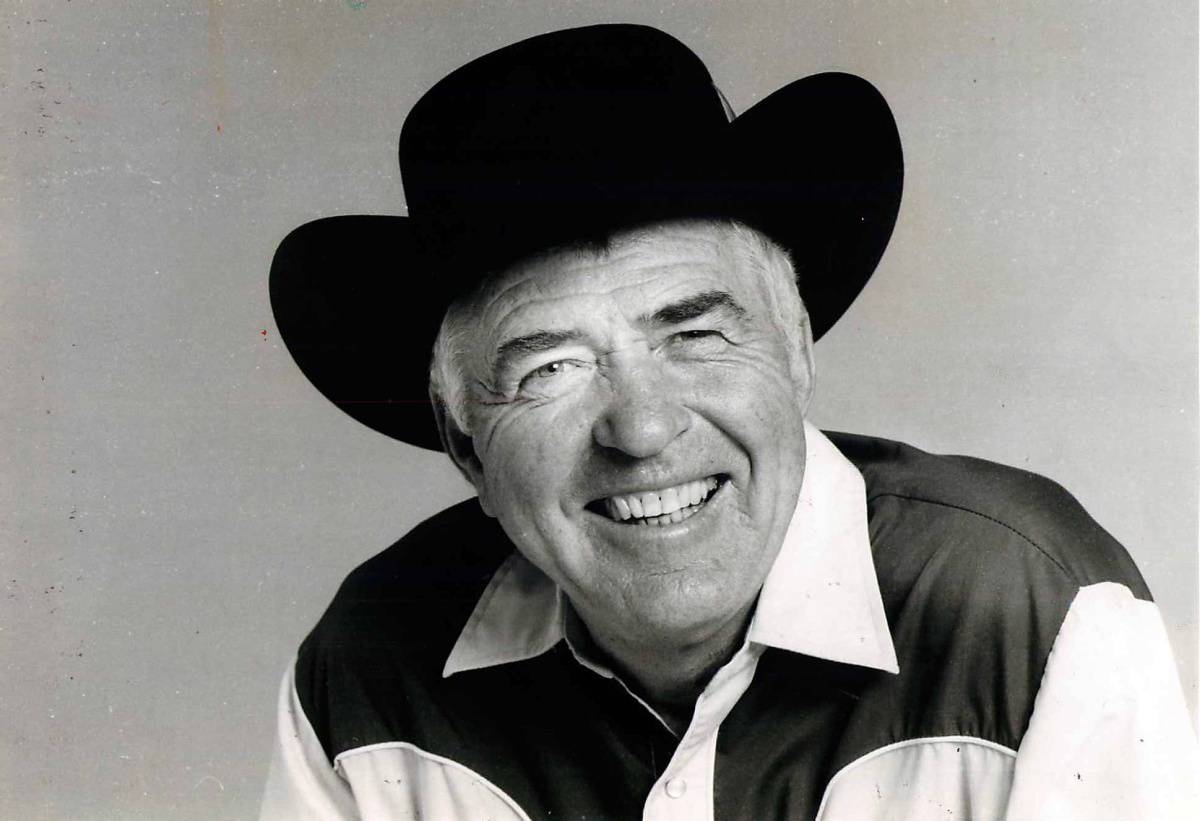
Any car guy living in Los Angeles or nationwide for that matter knows the folk tales surrounding the formation of Shelby Automobiles back in the early 1960s. Order a rolling chassis and body from AC Cars Ltd., order an engine from Ford, mix at Mooneyes and hey presto, Cobra. My guess is that even those who were close to Carroll “The Magician” Shelby didn’t know how the Shel’ game worked but work it did to build an incredible brand that endures.
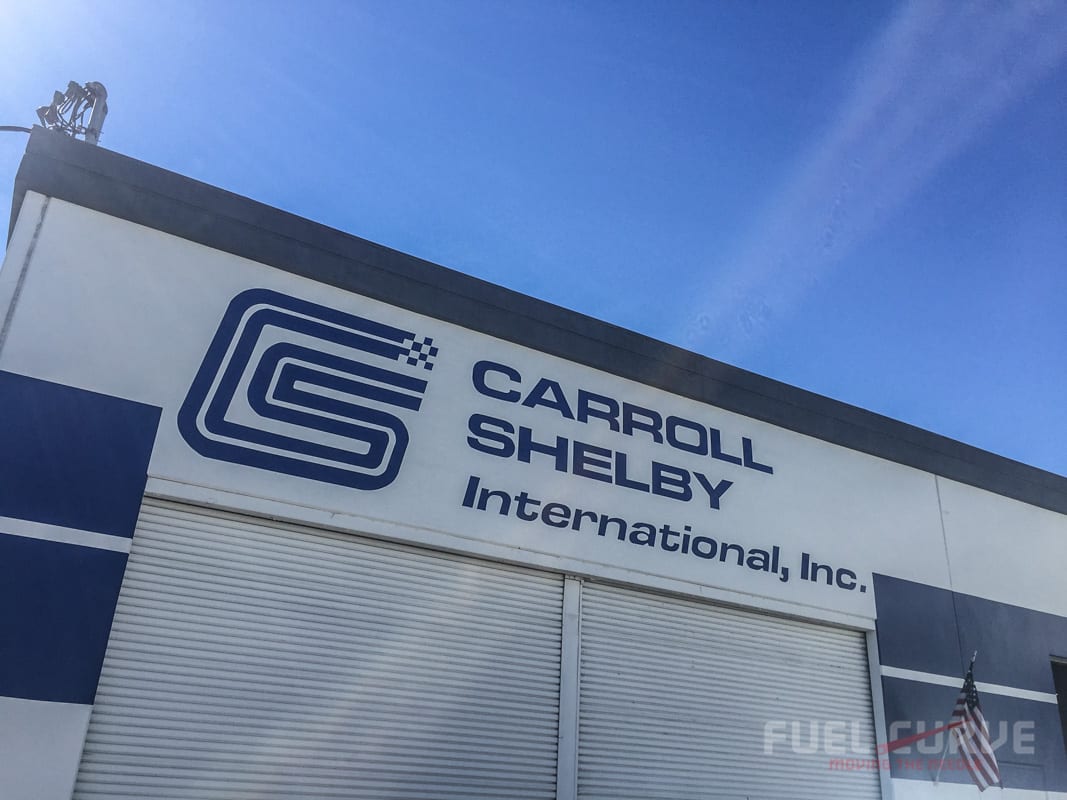
I guess Ol’ Shel’ understood pretty quickly that he could sell a lot more Mustangs than he could Cobras. Heck, Ford sold 22,000 ponies the first day they hit dealerships! Ford’s General Manager, Lee Iacocca, knew they could do better and grab the as-yet untapped youth market. He called Shelby and asked for a Mustang that would trounce the Corvette in SCCA B Production road racing. In fact, the Mustang was already proven in Europe where Alan Mann Racing had prepped the very first ten Mustangs for rallying.
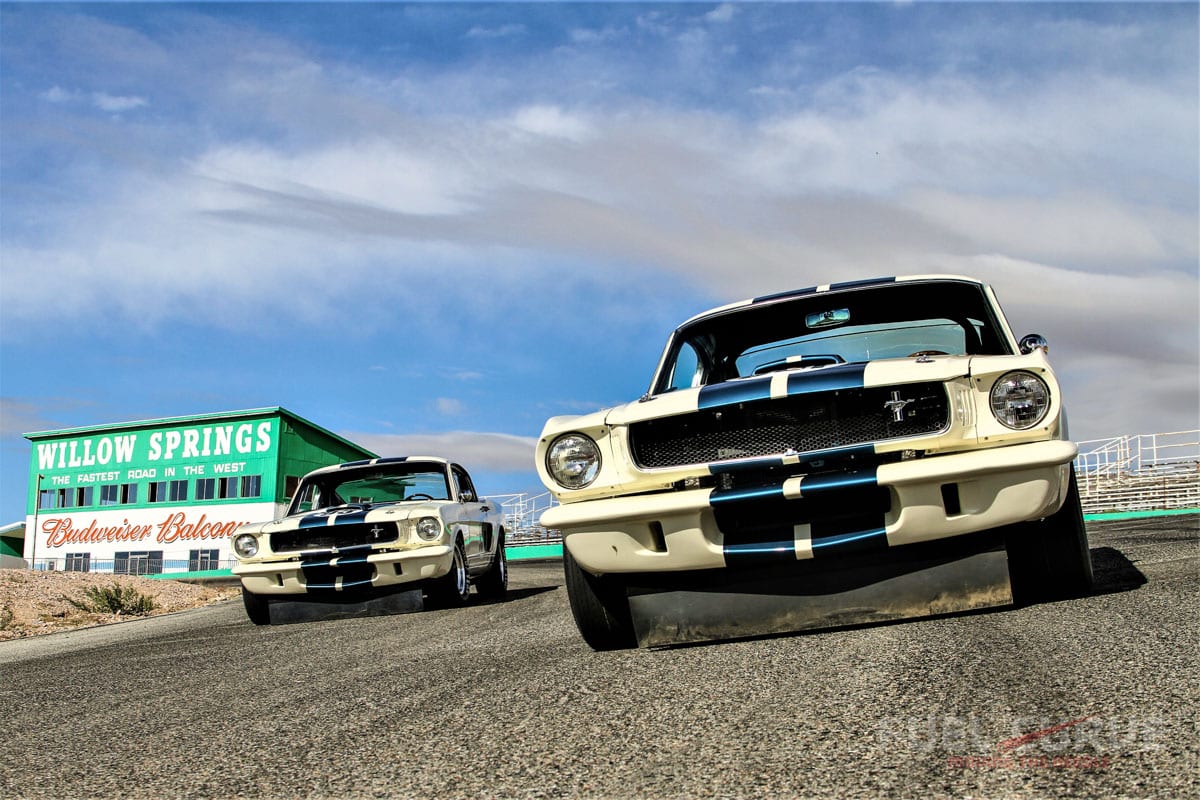
Sensing there could be competition both from Mann in Europe and Holman & Moody in the U.S., Shelby apparently reluctantly agreed and took delivery of a notchback. Subsequent testing at Willow Springs revealed a secretary’s car with management potential. Meanwhile, Shelby consulted with John Timanus – the SCCA’s technical director who had previously been an instructor at Shelby’s School of High Performance Driving (it would eventually become the Bob Bondurant school). Timanus provided the criteria and Shelby ordered the cars from Ford’s San Jose plant hence the R code. They would be Wimbledon White 1965-1/2 2+2 fastbacks less hood and less back seat to meet the SCCA’s sports car requirement.
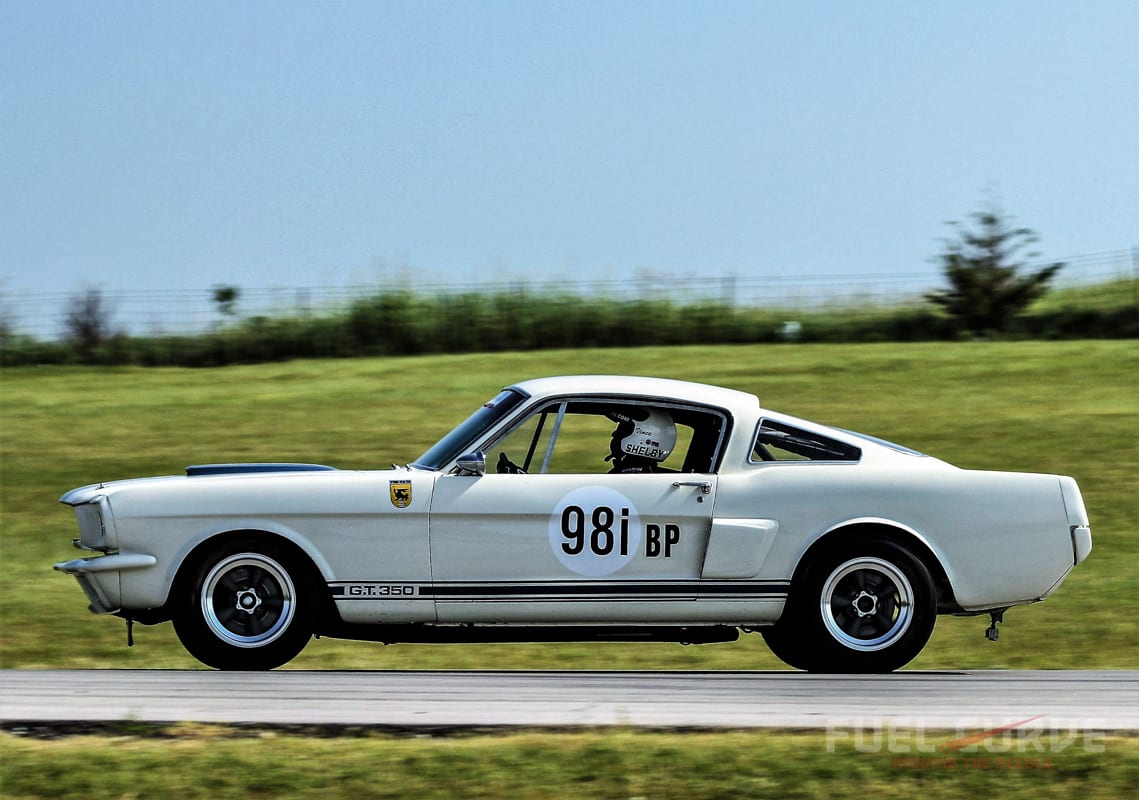
Shelby also ordered the high-performance 289 that were internally to Ford coded “K”, hence the K-code designation. Upgrading the engine of the “R” model included blueprinting, balancing and the addition of high-compression pistons. External modifications included an aluminum “high-riser” intake with a Holley 715-cfm four-barrel, a 6.5-quart oil pan, Tri-Y headers and an X-pipe exhaust system that exited ahead of the rear wheels. Behind the engine was an aluminum Borg-Warner T-10 four-speed and a limited-slip, 9-inch Dana rear end. The engine upgrades added 35 hp to the stock 271 rating.
The suspension was likewise upgraded to race specs with 11.375-inch Kelsey-Hayes discs up front and heavy-duty, 10 x 2.5-inch Ford Galaxie drums in the rear along with adjustable Koni shocks all round. One of the significant suspension changes was the lowering of the inner pivot of the upper control arm down by one inch. According to the May 1965 Road & Track magazine test, “This results in greater changes in wheel camber during cornering, which keeps the front wheels more nearly vertical. It also raises the front roll center and consequently reduces the tendency to plow. Adding to the front roll stiffness, the diameter of the anti-roll bar has been increased from 0.84 to 1.00 in.”
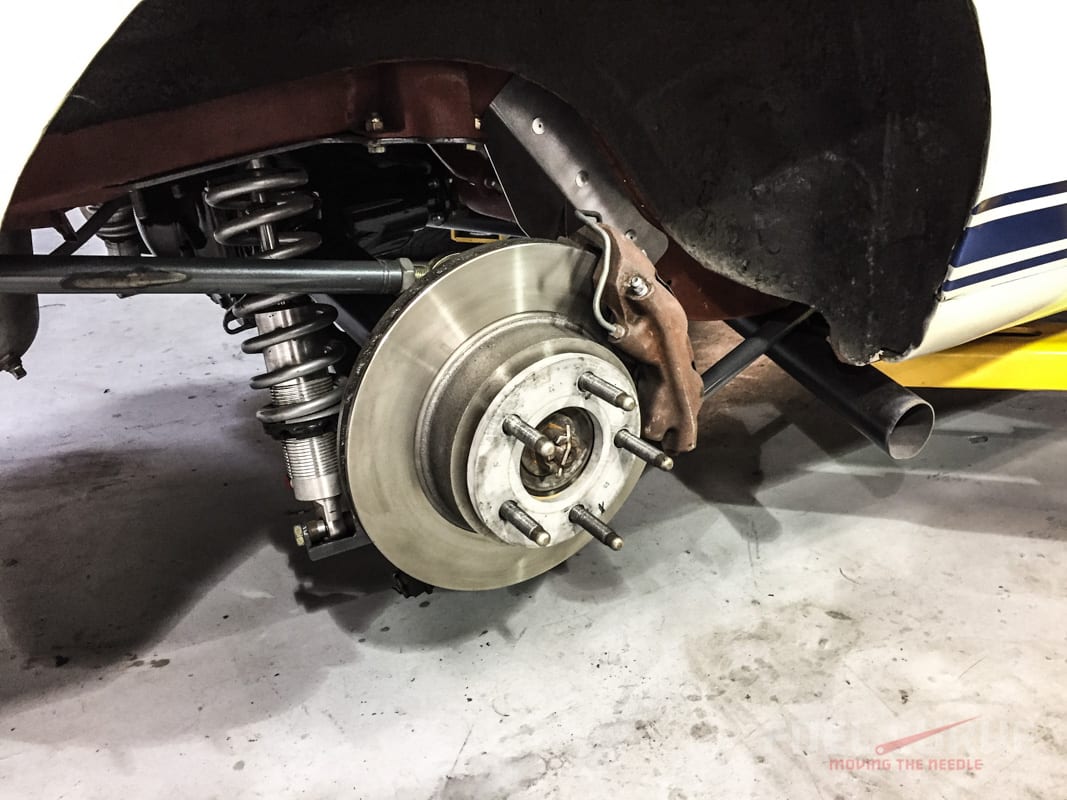
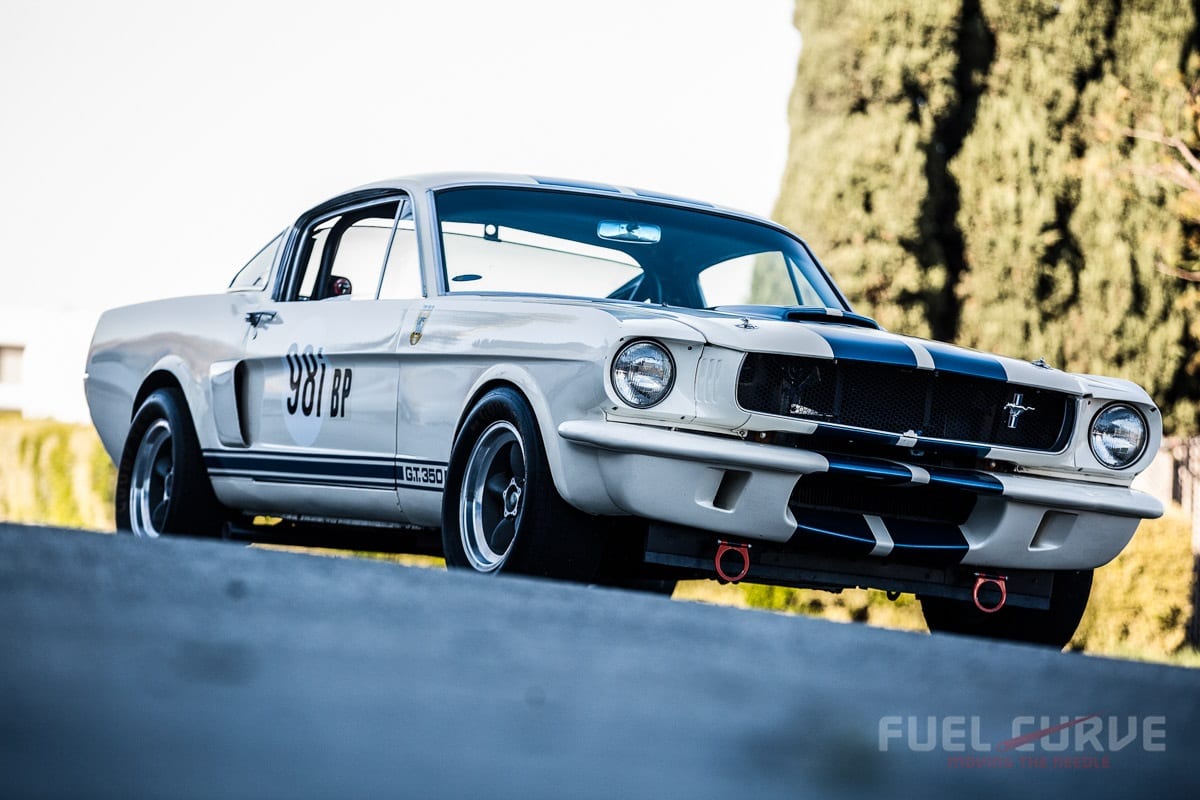
The interior was almost stock. Of course, the back seat was nixed and the space was used for the spare. The seats were stock and offered little lateral support beyond the addition of wide, Ray Brown lap belts. Tach and oil pressure gauges were added and the stock deep-dish Ford steering wheel was swapped for a flatter, wood-rim, Cobra-style wheel.
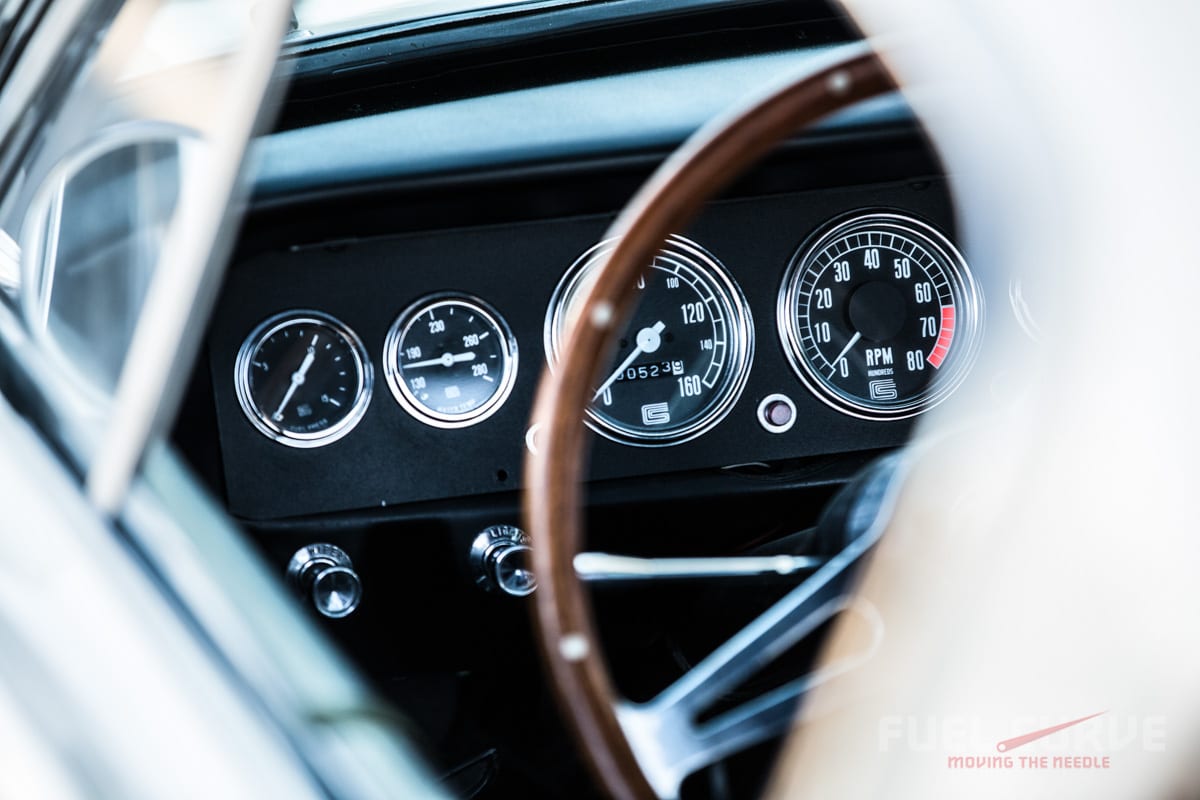
The list price of the G.T.350 tested by Road & Track was $4,311, plus $273 for the cast magnesium wheels. The “R” competition version that was sold through Shelby’s Venice, California factory which added almost another $2,000 to the price. At the time Shelby was said to be tooling up to make 200 a month but most sources agree that only 562 units were built of which 36 were built to SCCA race-spec.
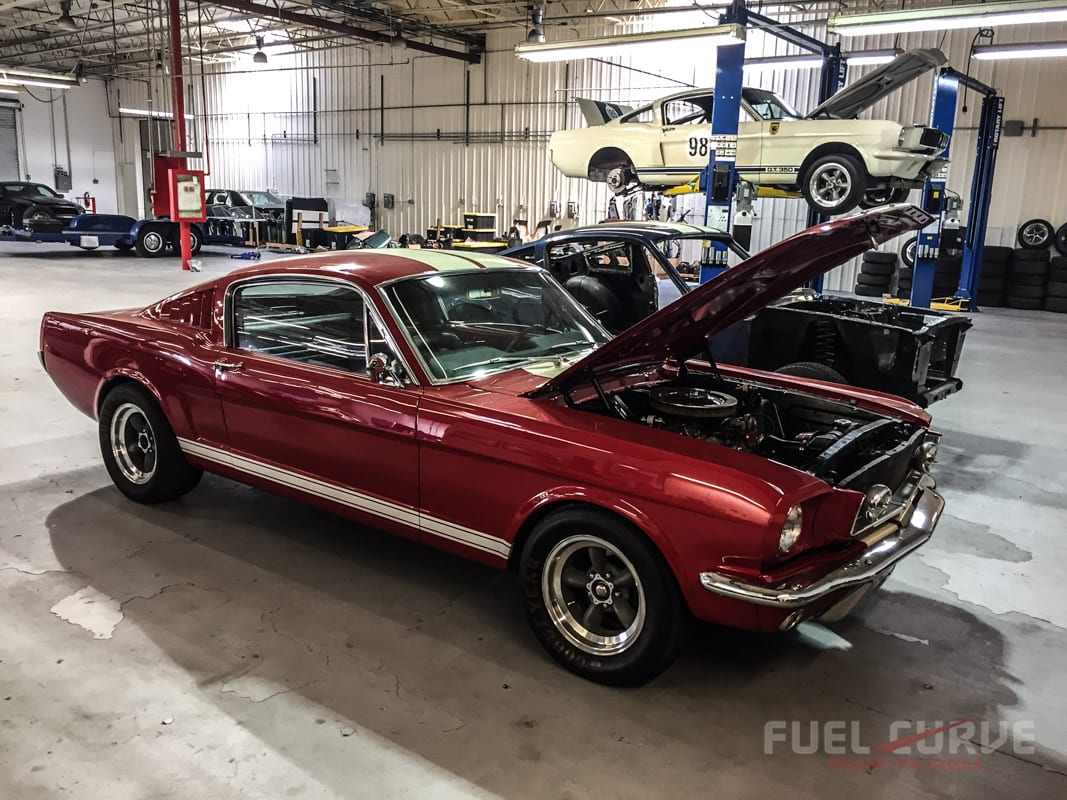
As a consequence of the current interest in American muscle cars of the 1960s, of which the G.T.350 is high on the list, interest in historic road racing, and all things Shelby, OVC Mustangs was formed to build a short run of 36 continuation cars. Enter Jim Marietta (pictured below), Ted Sutton and consultant Peter Brock. Peter, the father of the Cobra Daytona Coupe, almost needs no introduction but he was there at Shelby’s from 1962 until 1965 working on the Daytona when they were building the G.T.350. Jim was there through 1965 and Ted worked there from 1963 to 1965 as a crew chief, fabricator and mechanic.

Jim, the spokesman of the operation, grew up in Cleveland, Ohio going to the races as often as he could afford. One day, after seeing Jim hang around at so many events, Shelby’s race team manager Al Dowd asked Jim if he wanted a job. Jim was 17 and of course said, “Yes”. Soon after Jim received a letter from Al telling him to be in Los Angeles, January 2, 1965 and to bring his tools.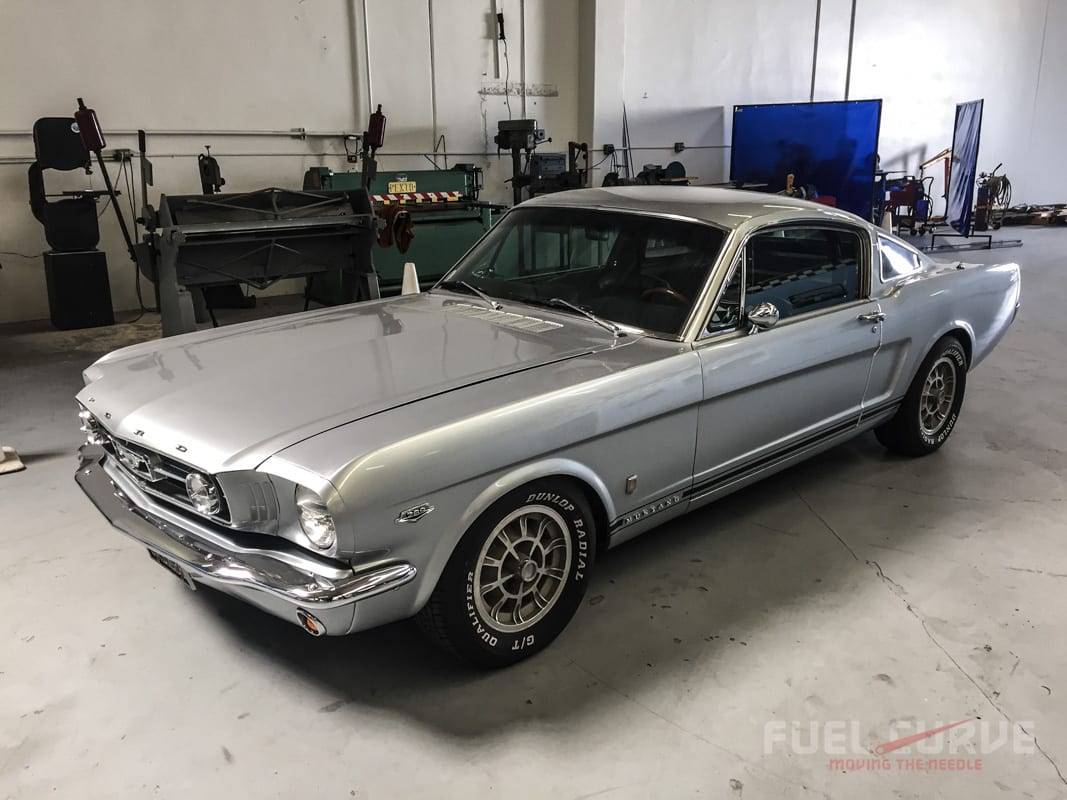
When he arrived one of Jim’s tasks was to work with Brock, Sutton, Chuck Cantwell and later with designer Klaus Arning on the independent rear suspension (IRS). Despite plenty of testing by Ken Miles at Riverside and Willow Springs the IRS just didn’t provide enough benefit to outweigh the costs and it was shelved for the time being. Indeed, Jim still has the original, fabbed upright.
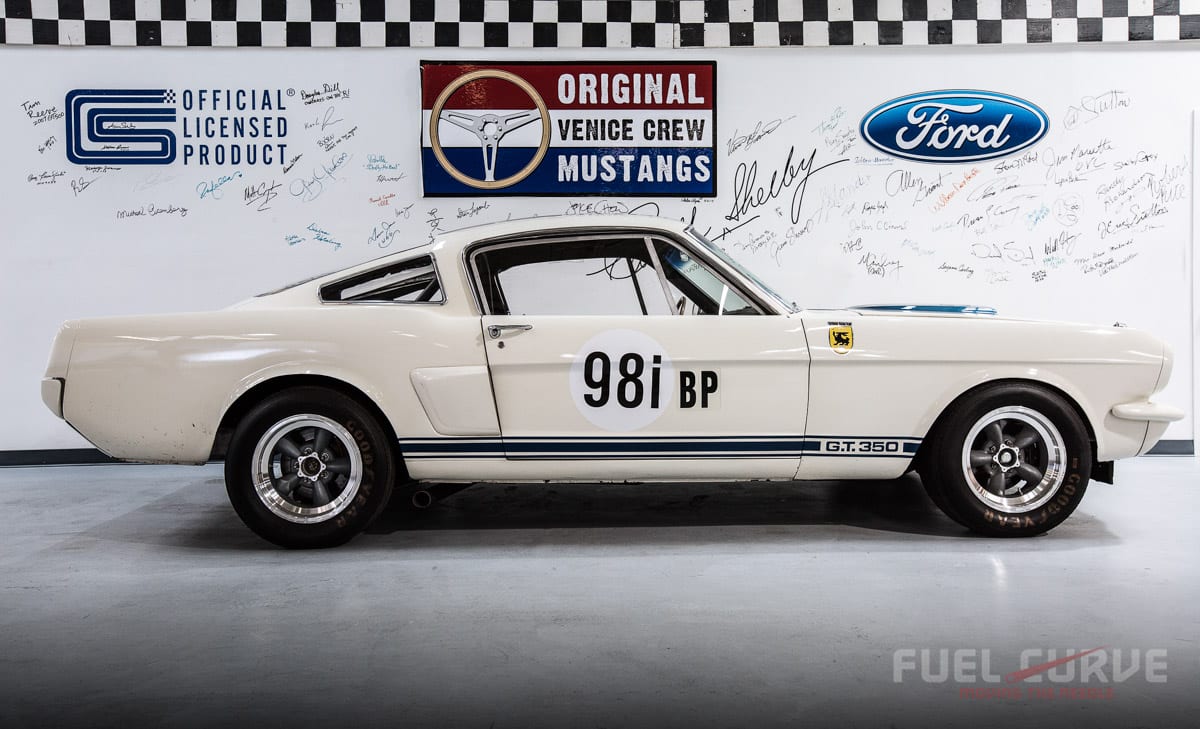
Of course, you can’t just go build a new Shelby Mustang G.T.350R. You have to license the project with both Ford and Shelby but with the group’s credentials that was no real hurdle and Original Venice Crew Mustangs (OVCMustangs.com) was officially in business as of September 2014. Two prototypes were subsequently built in 101 days in Brock’s shop in Henderson, Nevada, where Pete was able to incorporate some of the design elements he originally suggested for the G.T.350R.
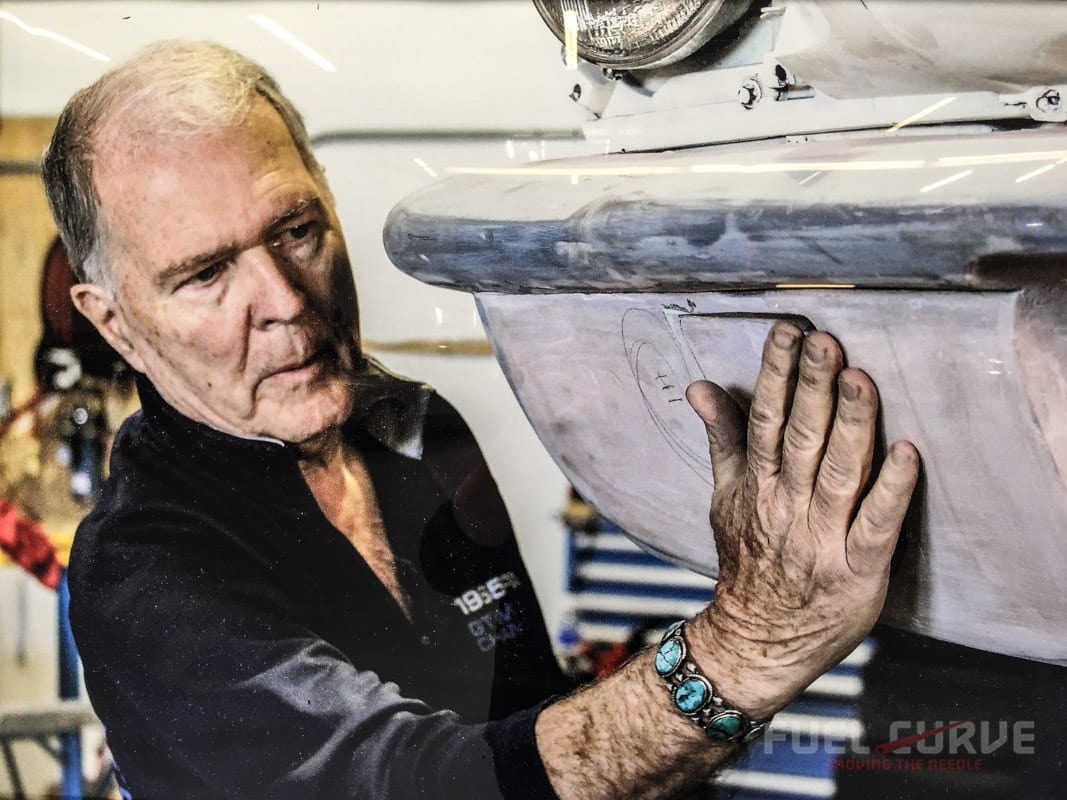
These improvements consist of a new front lower valance, new Plexiglas three-quarter windows and a new Plexiglas rear window. Subtle but significant parts that should also be available separately for retrofit. Unfortunately, Pete was not able to persuade Jim (just as he had tried with the guys at Ford back in the day) that ideally the hood scoop should face backwards to take advantage of the high pressure at the base of the windscreen.
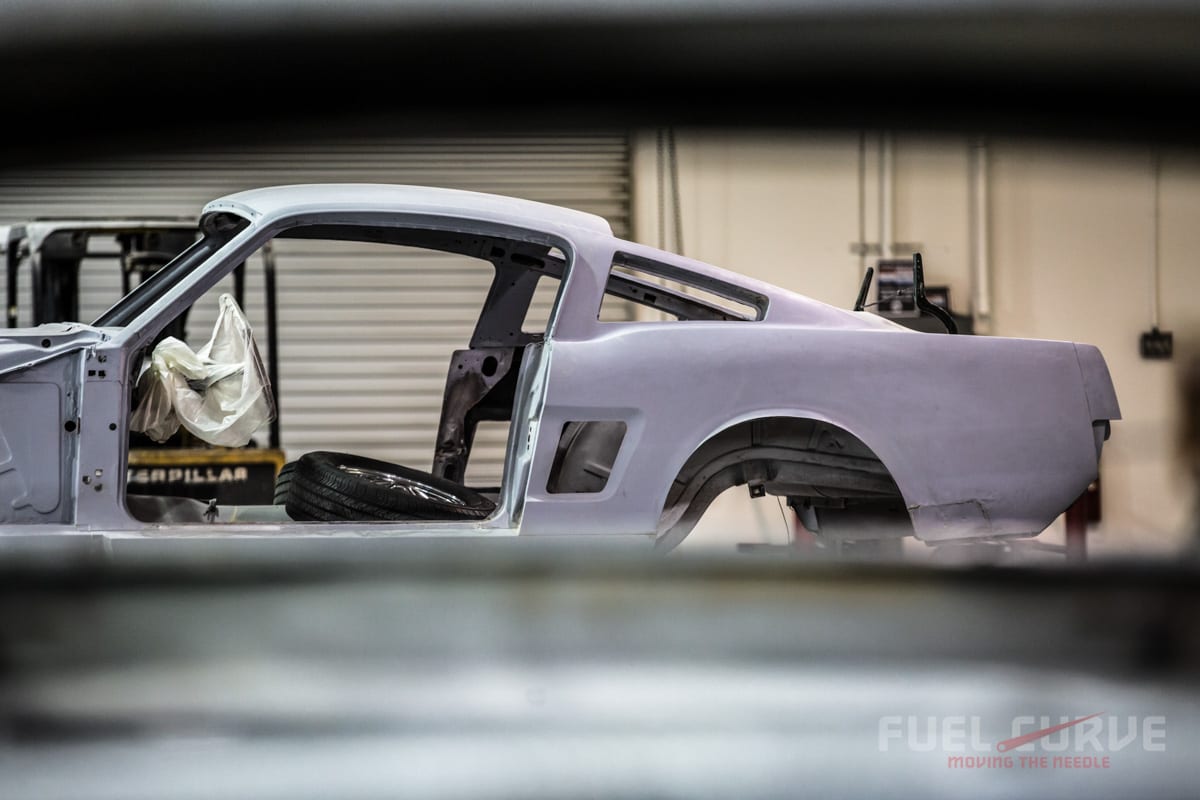
The two prototypes were built from original, licensed-for-the street ’65 Mustang Fastbacks as will be the 36 continuations, however, they will be serial-numbered cars. Each car is carefully selected before it is completely stripped and blasted clean prior to any necessary repairs. Meanwhile, a new iron-block 289 is sourced from Bill DenBeste’s Carroll Shelby Engine Company in Windsor, California. Each engine is built to the original specs down to the hand-formed air filter that is made by Jere Kirkpatrick who worked at Shelby and drove a Cobra DragonSnake to the 1964 NHRA National Championship. Jere also fabs the cone-shaped splash guard around the gas cap on the trunk-mounted gas tank—tasks similar to those he performed 50 years ago. Of course, engines can be built to any customer spec.
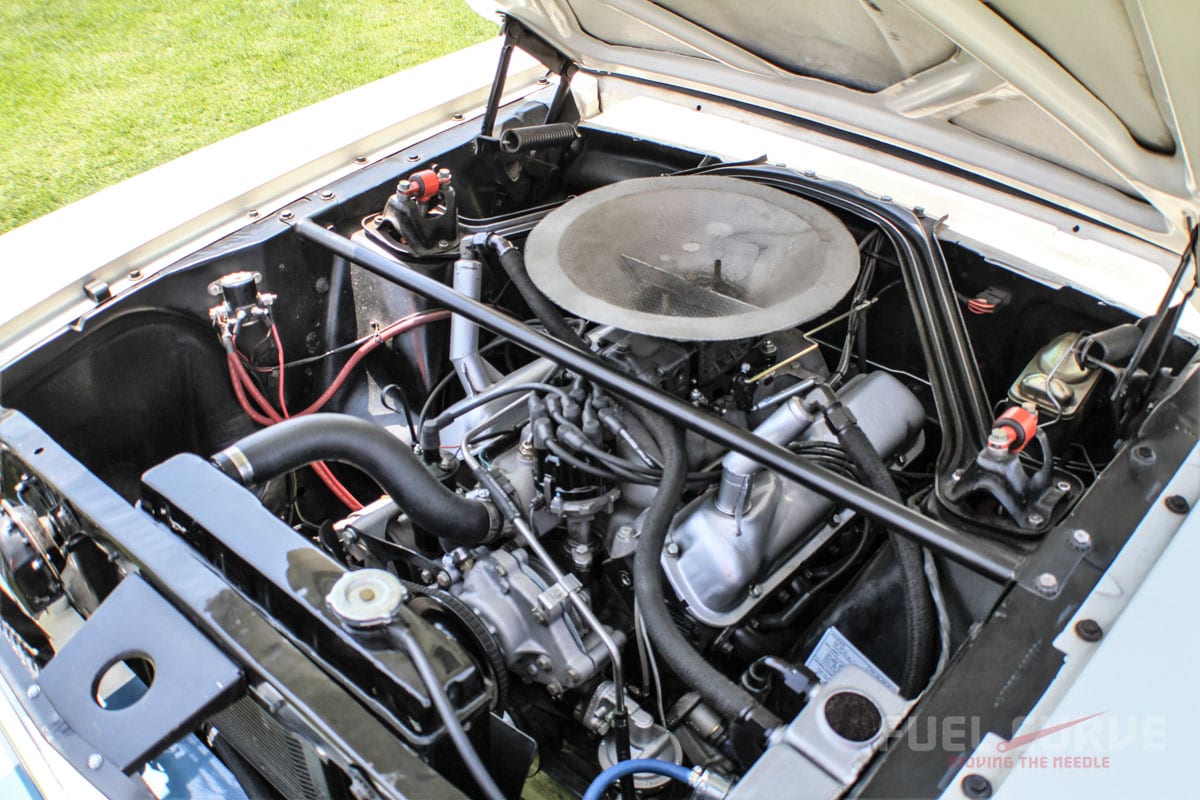
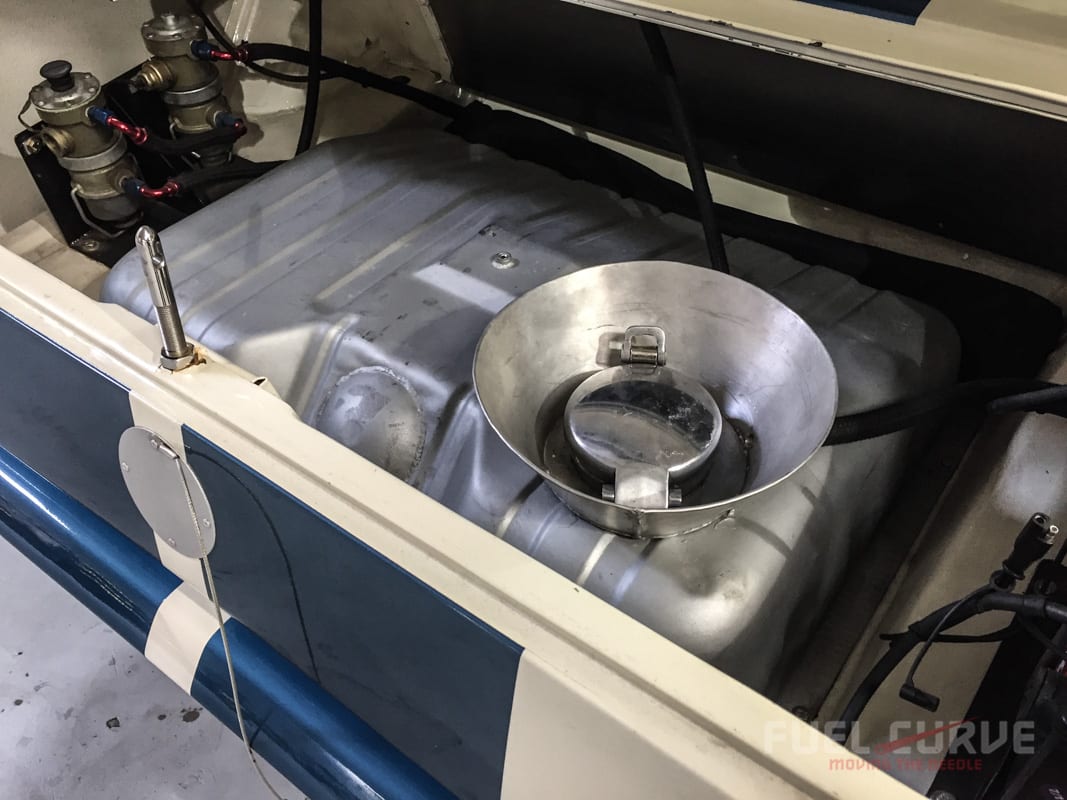
In 2017, OVC moved into the old Shelby International headquarters engine building on S. Figueroa Street, Gardena, California. It’s a huge, 9,000 square foot space that dwarfs the production area, however it does afford room to grow. While visiting I counted about nine vehicles in process from being blasted to assembled. Unlike the original Princeton Drive shop where everything was done on jack stands, here, the amount of equipment is growing daily to keep up with demand.
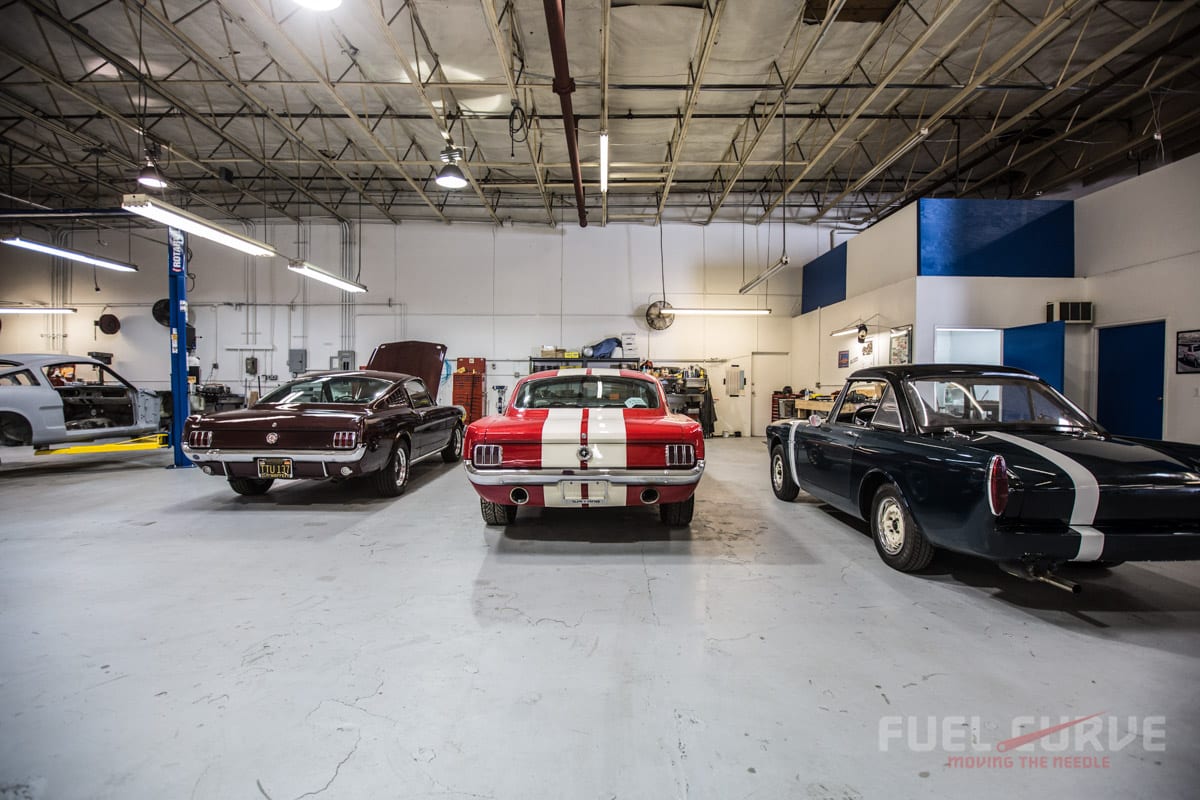
After the body shells are prepped, which includes the addition of original-style steel fender flares, they are painted Wimbledon White with Guardsman Blue stripes on the rocker panels and over the top of the body. Other external additions include the original-style fiberglass hood complete with scoop, the Pete Brock valence and windows and side scoops behind the doors.

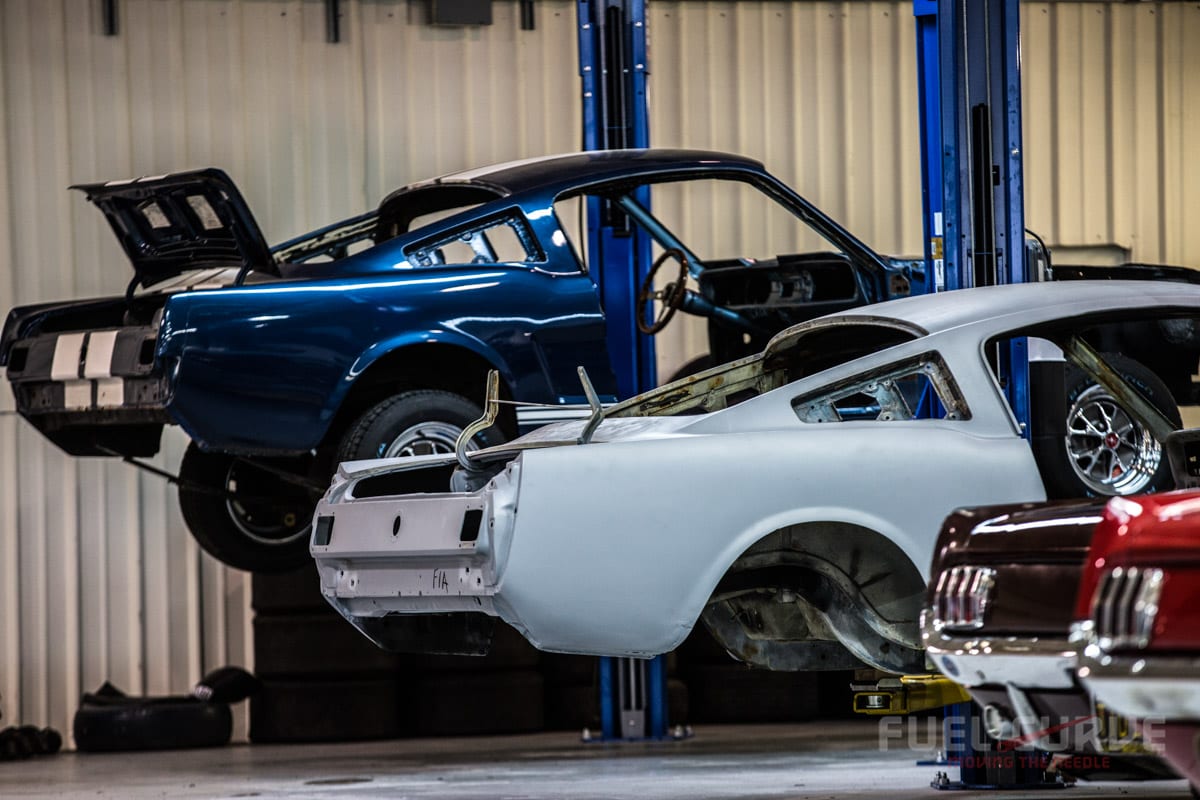
The underpinnings are somewhat similar to the original; however, the team has been able to offer the IRS that they all worked on back in the day as an option. It comprises a limited-slip Dana center section with vented discs. Further forward there’s a period-correct aluminum 4-speed with the stronger cast-iron tail shaft. The front suspension is much the same as the original and the wheels are 5-spoke Americans shod with, naturally, Goodyear 15 x 7 race tires.
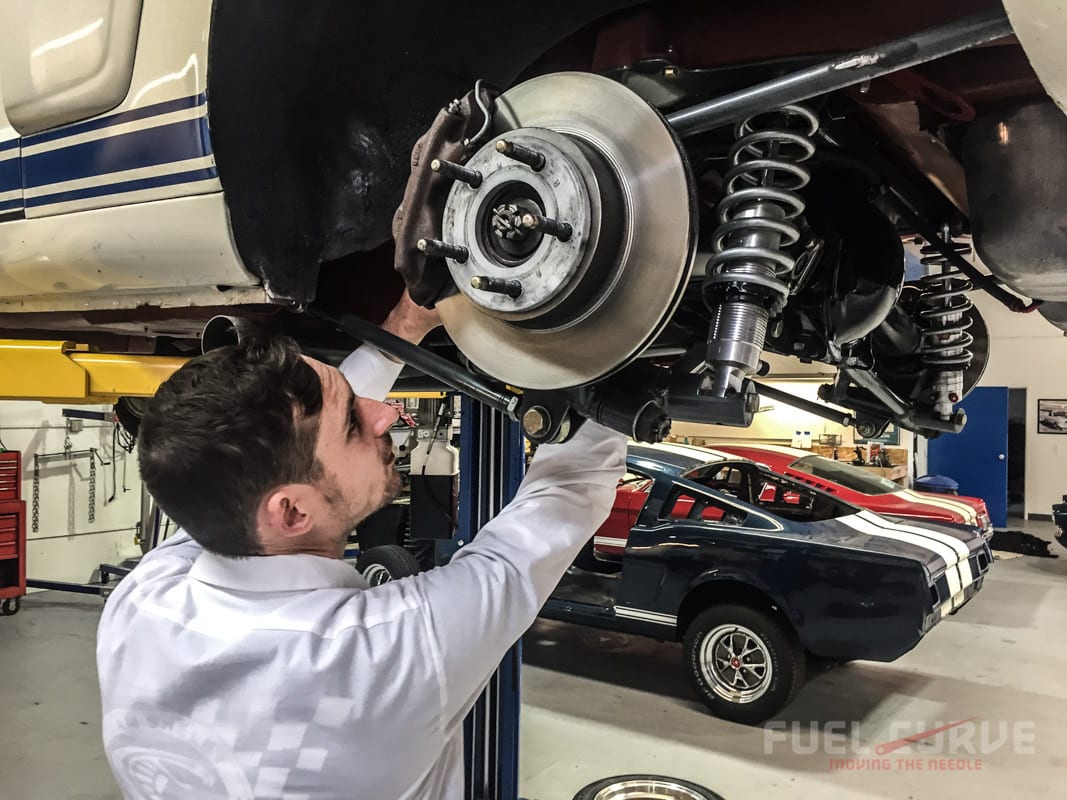
The interior remains much the same as the original. The only color available is Henry Ford black and it comprises a deleted back seat, a four-point roll cage per the original, a race seat for the driver, a stock seat for the passenger, a new instrument cluster and a kill switch attached to the roll cage above and behind the passenger seat—something the original cars did not have. They do have the shallow-dish, wood-rim wheel of the original.
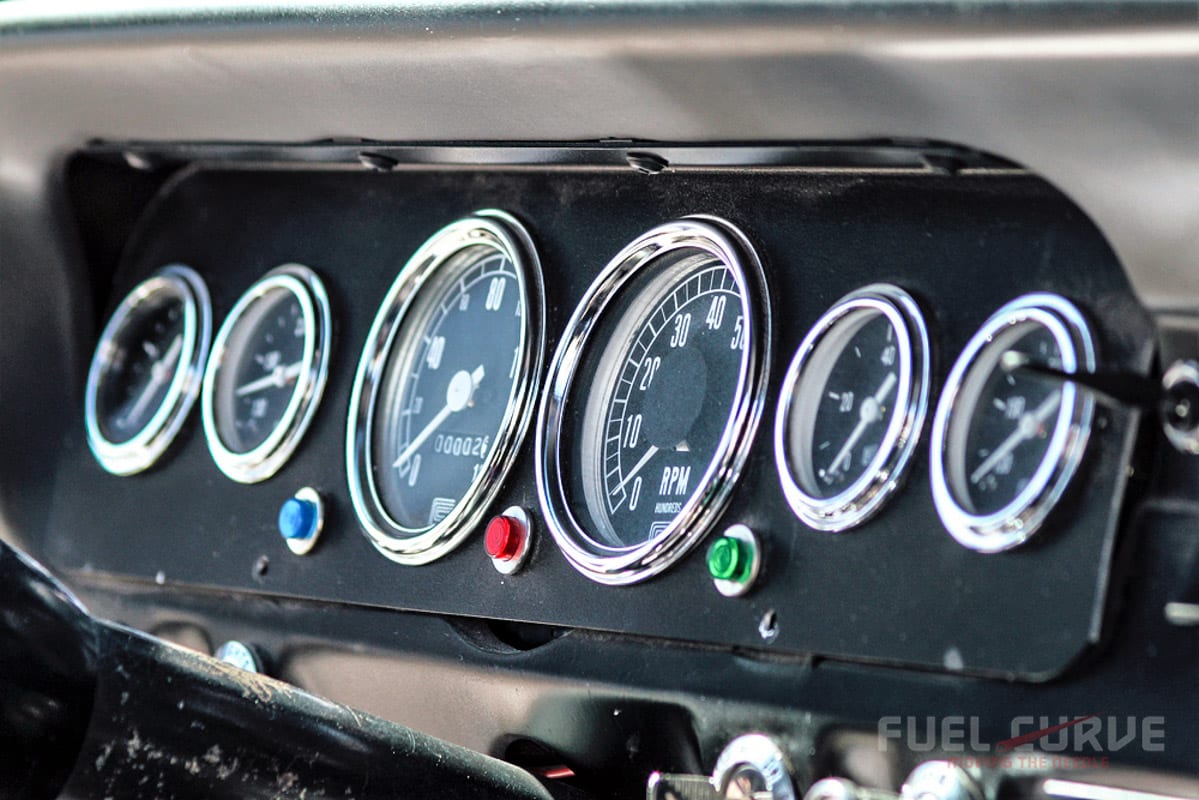
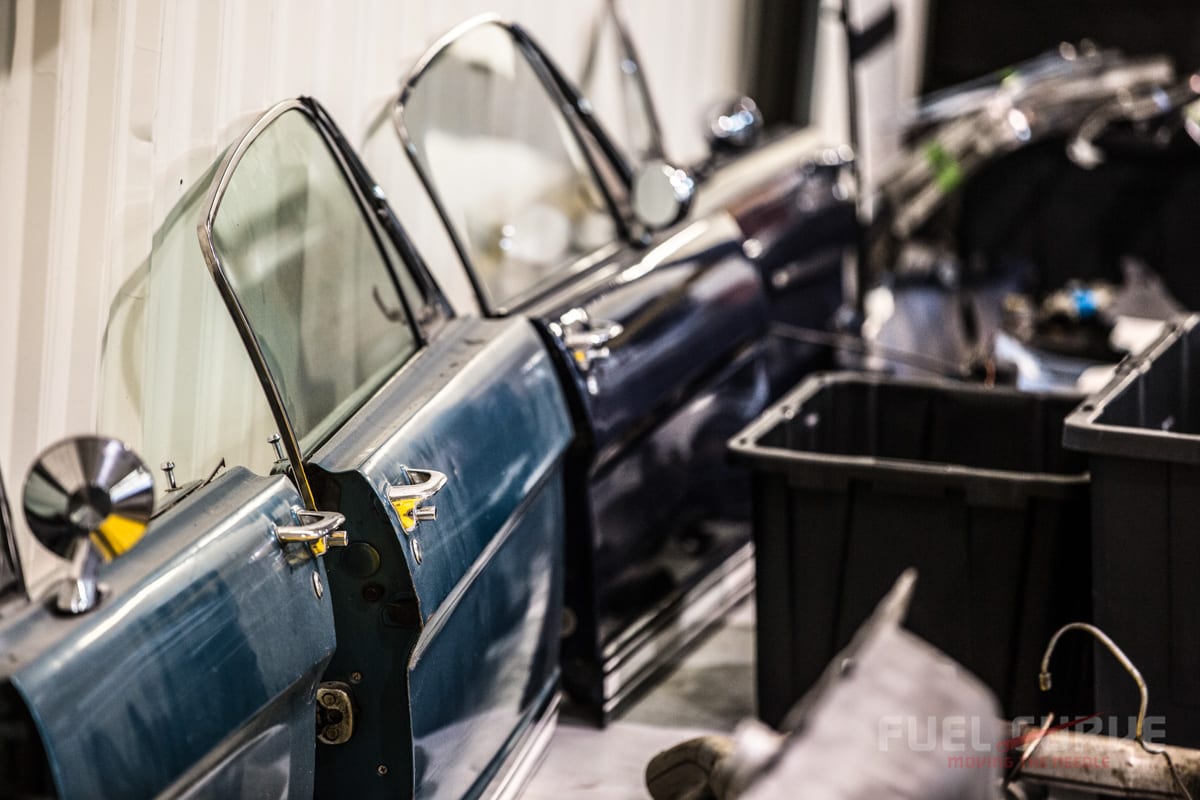
Unfortunately, I did not get the opportunity to get behind that wood-rim wheel, however, testing of the first car was conducted at Willow Springs Raceway on February 14, 2015, exactly 50 years from Ken Miles’ inaugural win at Green Valley Raceway, Texas, February 14, 1965. The test team included Vince LaViolette, Shelby American’s current test driver, and Rick Titus, son of Shelby Trans Am winning driver Jerry Titus. Former Shelby American driver and Le Mans winner John Morton was also recruited to help develop the car’s suspension and refine its handling. The guys know their stuff because the first new-old G.T.350R went on to win its very first race in June 2016 at Hallett Motor Racing Circuit, Oklahoma.
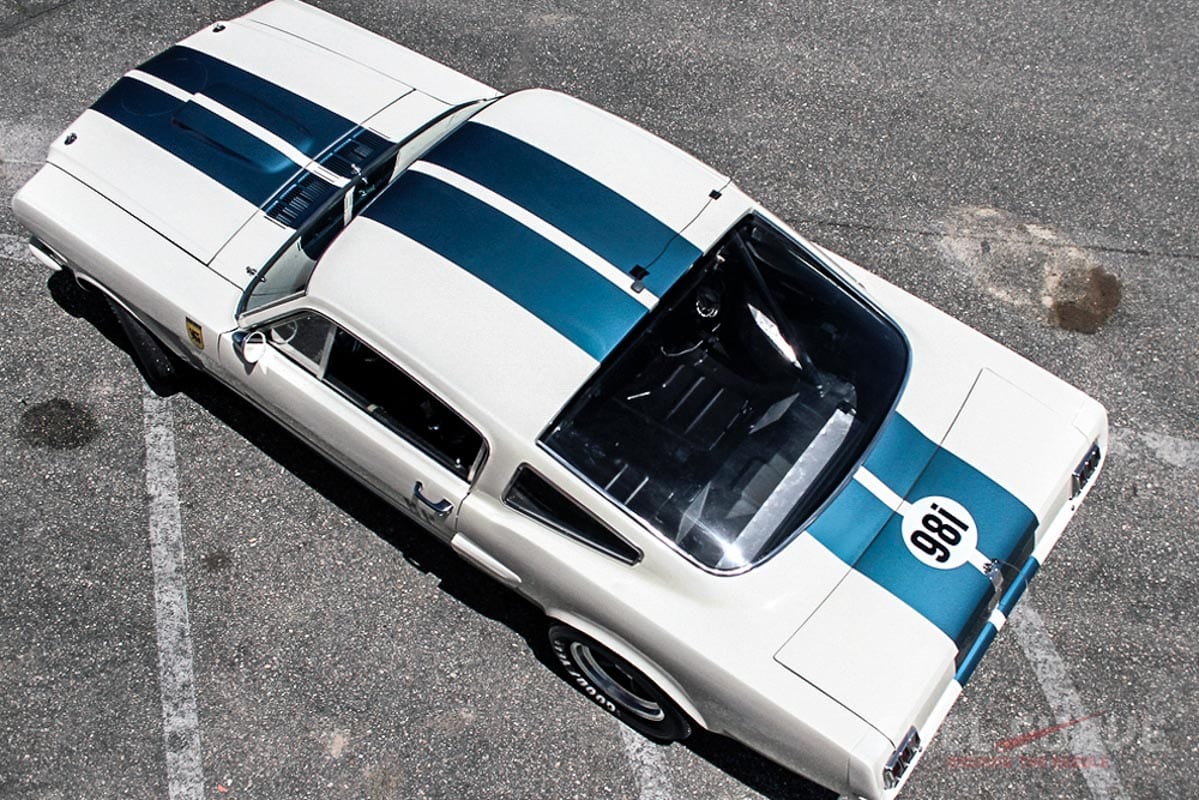
With original K-code Shelby “street” G.T.350 Mustangs fetching well north of half a million dollars and G.T.350R (race) models tipping the scales at $1 million, the $250,000 price tag of the continuation cars seems more than fair.


